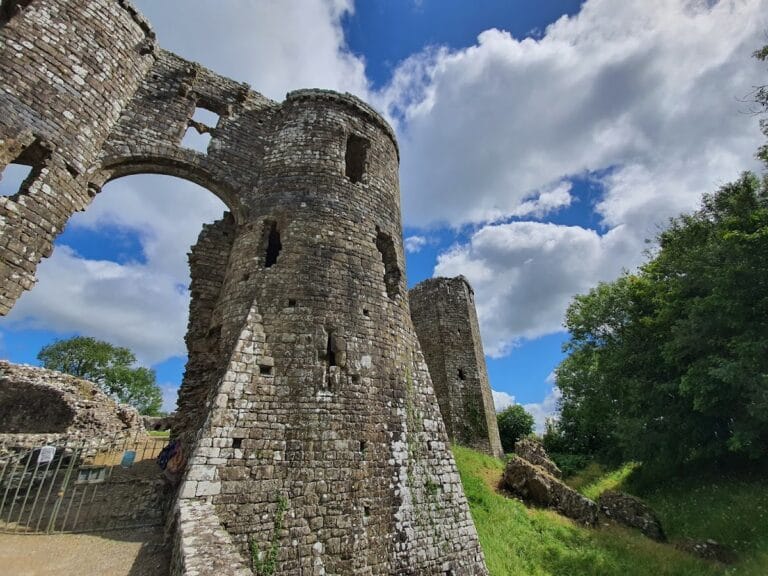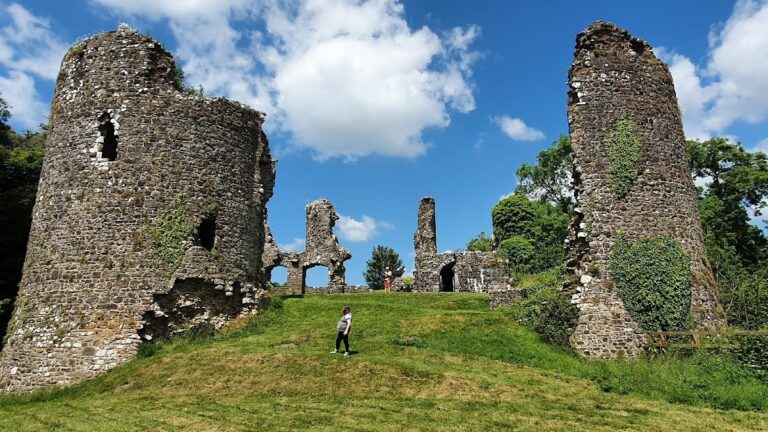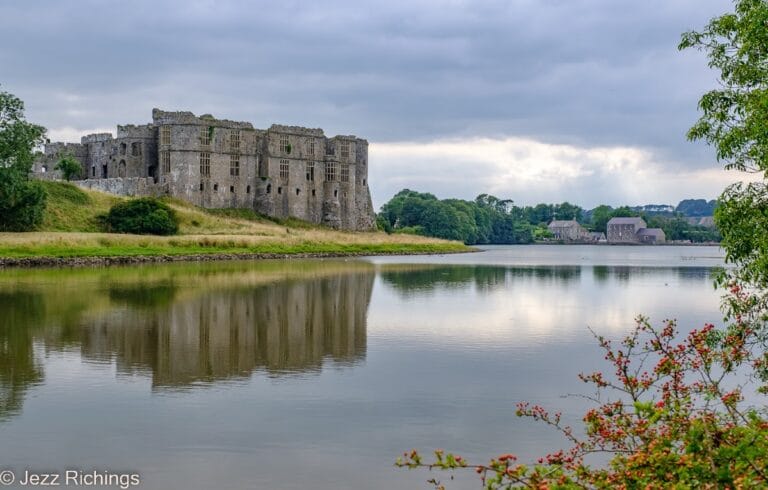Picton Castle: A Medieval Stronghold in Wales
Visitor Information
Google Rating: 4.4
Popularity: Low
Google Maps: View on Google Maps
Official Website: www.pictoncastle.co.uk
Country: United Kingdom
Civilization: Medieval European
Remains: Military
History
Picton Castle is a medieval stronghold situated near Haverfordwest in Wales. It was originally built by a Flemish knight at the end of the 13th century, marking its origins in the medieval period under Western European control.
The earliest known form of the site was a motte-and-bailey castle located on a mound east of the current structure. Between 1295 and 1308, Sir John Wogan, a member of the prominent Wogan family who had acquired the property by the late 13th century, replaced this wooden fortification with a stone castle. This transformation marked the beginning of Picton’s lasting stone-built presence. The Wogan family maintained ownership until the male line ended during the 15th century. Through marriage, the estate passed to the Dunn family when Katherine Wogan, the heiress, brought the property into her new family. It changed hands once more in the 1490s when Jane Dunn wed Sir Thomas ap Philipps of Cilsant, establishing the Philipps family as the castle’s new owners.
During its medieval history, Picton Castle witnessed notable military events. In 1405, it fell to French forces allied with Owain Glyndŵr, the Welsh leader who led a widespread uprising against English rule. Later, in 1645, Parliamentary forces captured the castle amid the wider upheaval of the English Civil War. Beyond these military episodes, the Philipps family played a significant role as local landowners and politicians. From the 17th century onwards, they undertook several renovations and expansions of the castle, reflecting changing tastes and needs. Sir John Philipps notably acquired a baronetcy in 1611, an official hereditary honor purchased for £1,095.
The estate stayed with the Philipps family through subsequent generations, with heirs adopting the family surname and various titles, including baronetcies and the barony of Milford. In the 17th century, the castle became connected to Cesar Picton, a black child believed to have originated from Senegal. He arrived at Picton Castle with the Philipps family in 1672 and later took the Picton surname. Today, while no longer privately owned by the family, the castle is managed by the Picton Castle Trust, a registered charity dedicated to preserving its legacy.
Remains
Picton Castle presents a distinctive layout characterized by its main rectangular stone building guarded by seven circular towers. This defensive design, unusual for the period, includes one tower at each corner, two flanking the eastern gatehouse, and one positioned on the western side. The original wooden fortification was replaced between 1295 and 1308 by this stone structure under Sir John Wogan’s direction.
The castle’s eastern gateway is composed of a pair of circular towers connected by an entrance secured by a portcullis, a heavy grilled door that could be lowered to block passage. This entry leads immediately into the vaulted lower area of the great hall, a key ceremonial and residential space. Originally, narrow slit windows were incorporated for defense but were replaced around the year 1400 with larger glazed windows, including a prominently recessed window set high in the gatehouse.
Outside the main building, the castle was enclosed by a walled courtyard though it did not feature a moat. In 1697, John Philipps, the 4th Baronet, introduced significant changes including the construction of parallel walls before the gatehouse. These created a terraced path to the newly established principal entrance on the first floor. He also added an extra floor above the great hall and altered various windows and internal rooms to suit contemporary needs.
Further interior transformation occurred between 1749 and 1752 when John Philipps, the 6th Baronet, updated the living spaces in Georgian style. This refurbishment involved renewing plasterwork, wood paneling, and flooring in all rooms above the basement, adding sash windows and installing marble fireplaces. Around 1800, the main entrance saw alterations including the replacement of the large arch with a smaller round-arched window. A modest portico with a balcony was erected but later supplanted by a Gothic round-arched doorway topped with two matching windows, giving the entrance its present-day look.
Additionally, a four-story wing built in Regency style appeared a few years after 1800 on the castle’s west side. By 1820, the terrace leading to the main entrance had been considerably expanded and reshaped into a rounded form. Throughout these centuries, Picton Castle has been well maintained, preserving its medieval military essence while integrating architectural details from the Georgian and Regency periods.










